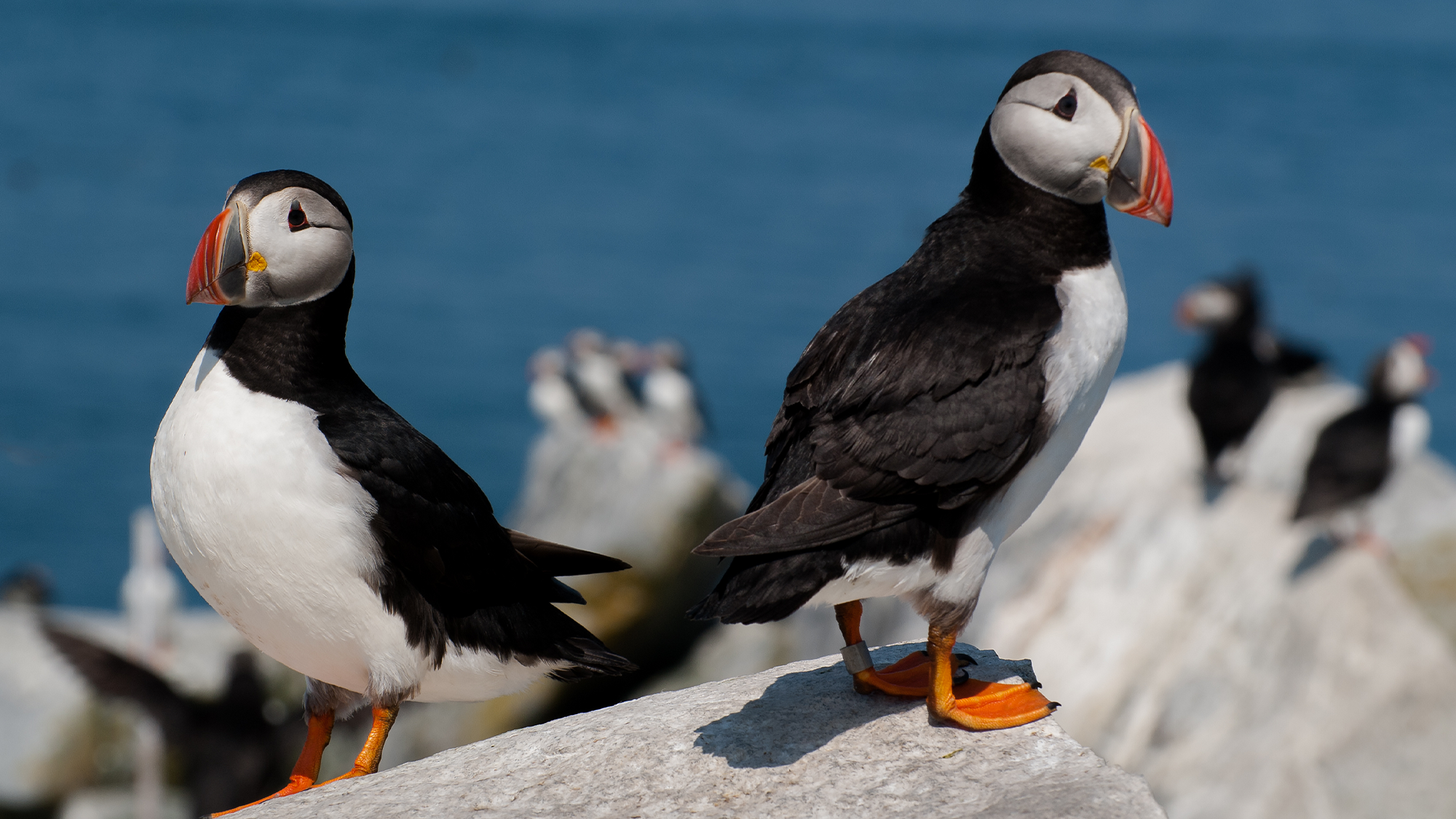

For the second year in a row, the Atlantic puffins living on the rocky islands off Maine’s coast had a rebound year for fledgling chicks, all in the face of record warm waters due to climate change. This second consecutive rebound year is welcome news, after 90 percent of nesting puffins failed to raise a single chick in 2021 while the climate change in New England has put this species, and others like humpback whales and the zooplankton at the base of the Gulfs food web, in jeopardy.
[Related: Cyclones can be fatal for seabirds, but not in the way you think.]
The Gulf of Maine and its bays are among the world’s fastest-warming bodies of water. Since the early 1980s, it has warmed about four degrees Fahrenheit, while the global ocean has risen by about 1.5 degrees Fahrenheit in the same period of time. The rising heat has affected the fish stocks in the area that puffins and other species rely on. Haddock used to make up a large portion of puffin diets, but populations have fluctuated in recent years, first increasing in 2017 due to federal management to this year showing signs of a decrease.
However, a small eel-like fish called the sand lance has been abundant this year. The fish are only about four to eight inches long, but are high in fats and make them a great forage fish for seabirds. A 2020 study found that 72 Atlantic Ocean animal species from whales to bluefish to gannets eat sand lances in the waters from Greenland to North Carolina.
According to the Maine Monitor, the sand lance were less abundant in the region by mid-July, but the puffins were found feasting on a mixture of haddock, hake, and redfish depending upon where they were. Don Lyons, the director of conservation science at National Audubon Society’s Seabird Institute, told the Maine Monitor, “I can’t offhand recall such a seamless transition from one fish to another. It tells you a lot about the resourcefulness of puffins and at the same time, it’s a reminder of how much we still don’t know of when and where food is for seabirds, and how fast that all can change.”
Lyons estimated that there are now as many as 3,000 puffins in Maine, what he calls a stable population. In 2022, about two-thirds of the puffins fledged—or developed wing feathers that are large enough for flight. While they didn’t reach that number this year, they had a better season than the catastrophic 2021 season despite a rainy and hot summer. The Audubon Society’s Project Puffin has been monitoring the population for 50 years and uses decoys, mirrors, and recordings to attract the birds to suitable nesting sites to raise the next generation of birds.

Maine’s puffin population was once as low as 70 pairs on Matinicus Rock 25 miles off the coast. They were hunted for their feathers and meat in the early 20th Century, but by the 1970’s Audubon conservationists worked to grow puffin colonies in the state, by bringing chicks from Canada to Maine’s Eastern Egg Rock. Puffins still call that tiny rock home, in addition to Seal Island and Petit Manan Island. Live cams keep an eye on them and volunteers and scientists monitor their progress every year.
Currently, Maine’s population are the only breeding Atlantic puffins in the United States. The species lives in areas of the North Atlantic from Maine and Canada eastward to Europe. Iceland, a country well known for its puffins, has seen the puffin populations decline by 70 percent in 30 years largely due to lack of food due to warming oceans.
[Related: Emperor penguins suffer ‘unprecedented’ breeding failure as sea ice disappears.]
While this ability to reproduce despite huge environmental changes does speak to their resiliency as a species, puffins are still at risk of long term dangers from marine heat waves, sea level rise threatening nesting sites, and a loss of food.
“The problem with climate change is these breeding failures and low breeding productivity years are now becoming chronic,” Bill Sydeman, president and chief scientist of the California-based Farallon Institute, told the AP. “There will be fewer young birds in the population that are able to recruit into the breeding population.”
Some of the ways to help Maine puffin population and other coastal birds in the face of this constant uncertainty include Audubon’s adopt-a-puffin program and advocating for your local seabirds by contacting regional elected officials.
